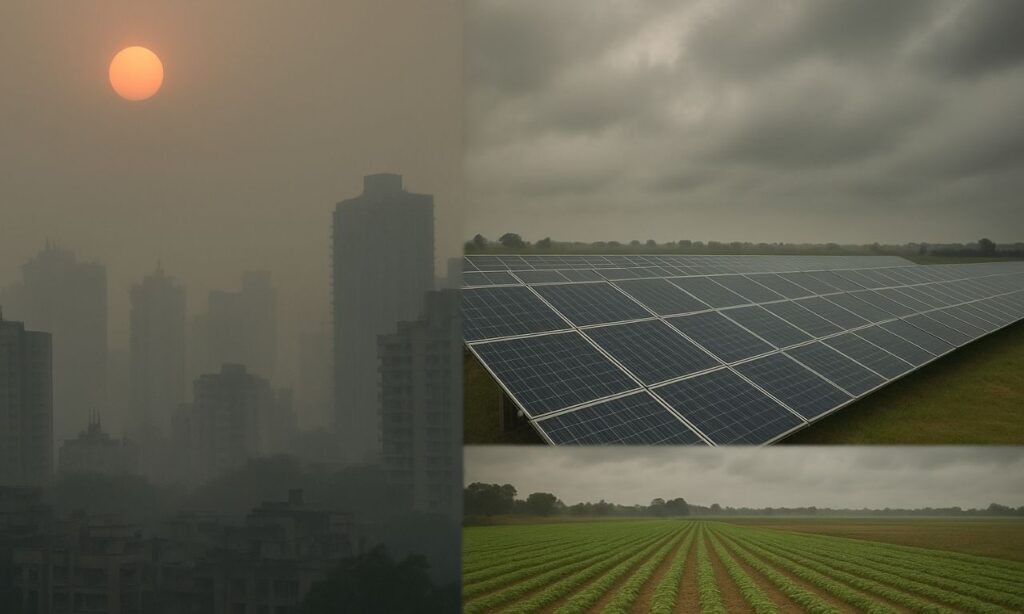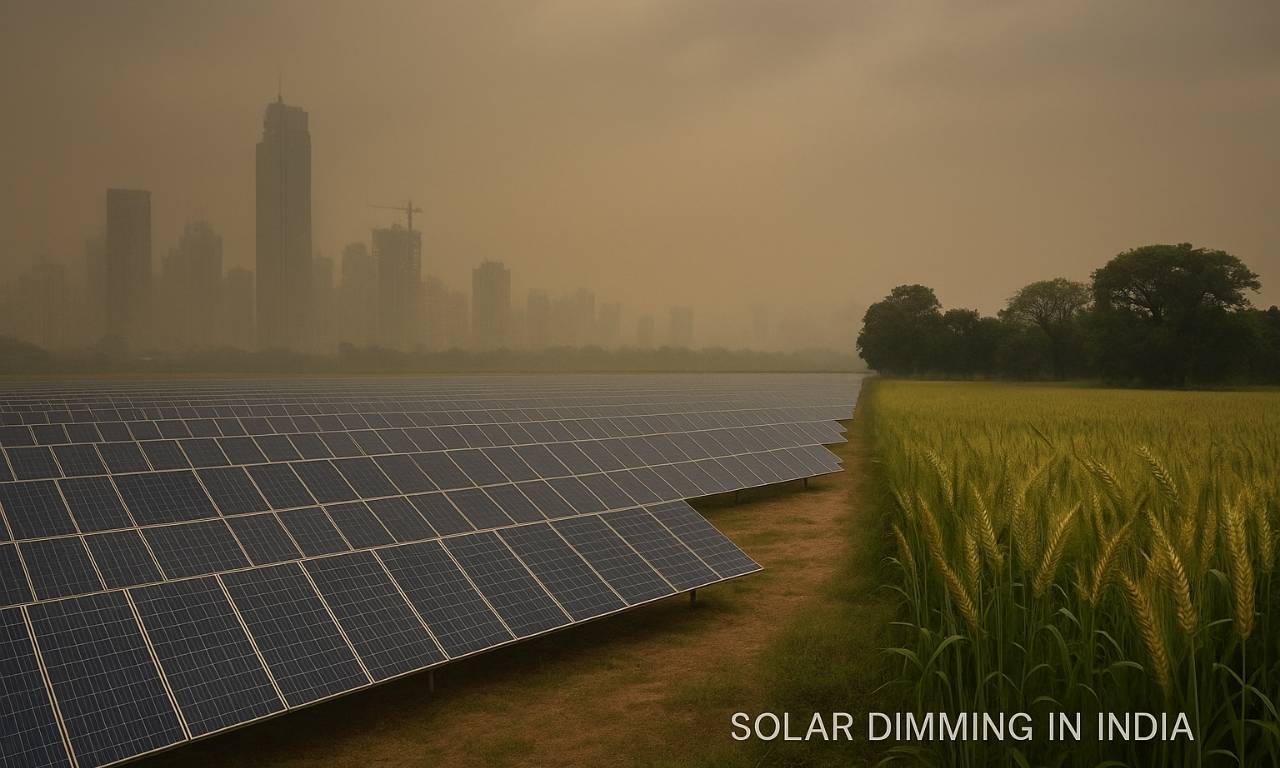Recent research published in Nature’s Scientific Reports has revealed that India is witnessing a continuous decline in sunlight hours due to rising pollution levels and increased cloud formation.
About Solar Dimming
- Solar dimming refers to the gradual reduction in the amount of sunlight (solar radiation) reaching the Earth’s surface over time.
- Primary Causes:
- High levels of aerosols from industries, vehicles, and biomass burning block and scatter sunlight.
- Cloud buildup and urban haze reduce solar penetration.
- Humidity and smog further trap sunlight, lowering visibility and brightness.

Key Findings of the Study
- Reduced Sunshine Duration: The northern plains of India have lost around 13.1 hours of sunshine per year on average over the past 30 years.
- Twomey Effect: Due to human-made aerosols, clouds contain more but smaller droplets, making them thicker and longer-lasting, which further blocks sunlight.
- Main Drivers: Industrial smoke, vehicle emissions, stubble burning, and dust pollution are the main contributors to this dimming trend.
Implications
- Renewable Energy: Declining sunlight could lead to up to a 7% fall in solar power output, threatening India’s 2030 renewable energy goals.
- Agriculture: Crops like rice and wheat may experience reduced yields due to lower light availability for photosynthesis.
- Climate and Environment: Dimming affects the Himalayan cryosphere, as altered sunlight patterns can disturb melting rates, rainfall, and regional water cycles.
Incoming Solar Radiation (Insolation)
Insolation is the solar energy received by the Earth’s surface in the form of shortwave radiation. It drives weather, temperature, and climate systems.
- Key Facts:
- Earth receives about 1.94 calories/cm²/minute at the top of the atmosphere.
- Varies with Earth’s position:
- Perihelion (closest to Sun): Early January
- Aphelion (farthest): Early July
- Influencing Factors:
- Earth’s rotation and tilt,
- Day length,
- Cloud cover and atmospheric clarity,
- Land–sea contrast and topography.
- Renewable Energy: Declining sunlight could lead to up to a 7% fall in solar power output, threatening India’s 2030 renewable energy goals.
- Agriculture: Crops like rice and wheat may experience reduced yields due to lower light availability for photosynthesis.
- Climate and Environment: Dimming affects the Himalayan cryosphere, as altered sunlight patterns can disturb melting rates, rainfall, and regional water cycles.
- Renewable Energy: Declining sunlight could lead to up to a 7% fall in solar power output, threatening India’s 2030 renewable energy goals.
- Agriculture: Crops like rice and wheat may experience reduced yields due to lower light availability for photosynthesis.
- Climate and Environment: Dimming affects the Himalayan cryosphere, as altered sunlight patterns can disturb melting rates, rainfall, and regional water cycles.
Conclusion
Solar dimming poses a growing challenge for India’s clean energy transition and food security. Addressing air pollution and improving atmospheric monitoring are essential to preserve sunlight availability and maintain environmental balance.
This topic is available in detail on our main website.





